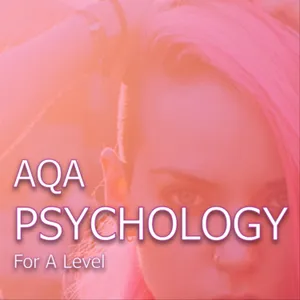Podcast Summary
Exploring Brain Activity with fMRI and EEG: FMRI uses changes in blood flow to identify active brain regions, while EEG measures electrical activity; both techniques offer insights into cognitive processes and brain function, with fMRI being non-invasive and expensive, and EEG being less expensive but less spatially precise.
Psychologists use various techniques to study the brain and investigate brain localization, with techniques like Functional Magnetic Resonance Imaging (fMRI) and Electroencephalograms (EEG) being commonly used. fMRI detects changes in blood oxygenation and flow in specific brain areas during neural activity, producing 3D images of active brain regions. EEG measures electrical activity within the brain via electrodes and is often used as a diagnostic tool to identify abnormalities. Post-mortem examinations are also used to analyze a person's brain following their death to establish the cause of deficits or disorders. fMRI is risk-free, non-invasive, and has a high spatial resolution, making it a valuable tool for studying brain activity. However, it is expensive and has poor temporal resolution. Techniques like fMRI and EEG have provided valuable insights into cognitive processes and brain function, and continue to be important tools in both medical and research contexts.
Understanding the strengths and limitations of fMRI, EEG, and postmortem studies: FMRI localizes brain activity but has poor temporal resolution, EEG has high temporal resolution but is generalized, ERPs offer more specific measures in cognitive research but lack standardization, postmortem studies provide valuable information but raise ethical concerns.
While functional Magnetic Resonance Imaging (fMRI) and Electroencephalography (EEG) are valuable tools in neuroscience research, each has its unique strengths and limitations. fMRI, though useful for localizing brain activity, has a poor temporal resolution due to the 5-second lag between neural activity and the image. This means it may not accurately represent moment-to-moment brain activity. On the other hand, EEG, with its high temporal resolution, can detect brain activity in just 1 millisecond. However, EEG signals are generalized and it's challenging to pinpoint the exact source of neural activity. Event-Related Potentials (ERPs), a type of EEG, offer more specific measures of neuro processes due to their excellent temporal resolution, which is even better than fMRI. ERPs are frequently used in cognitive research. However, they lack standardization, and background noise and extraneous material can be problematic. Postmortem studies, which have been instrumental in linking brain damage to deficits, provide useful information in localization and medical research. However, they raise ethical concerns regarding consent after death and the uncertainty of causation between observed brain damage and deficits under review. In summary, while each technique offers valuable insights, researchers must consider the unique strengths and limitations of fMRI, EEG, and postmortem studies when designing their research projects.






